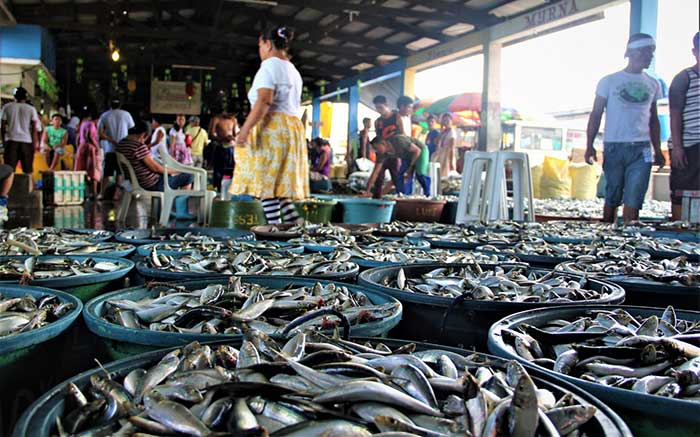The Bangko Sentral ng Pilipinas may have to hike key interest rates by 75 basis points if the US Federal Reserve raises rates by that much, BSP Governor Felipe Medalla yesterday said.

Medalla said the BSP has hiked rates enough, putting it on a target consistent inflation path, and that there was a fighting chance of average inflation at 4 percent next year.
As prices of major consumer items remain elevated, the Monetary Board on its latest policy stance meeting last month decided to raise the overnight reverse repurchase facility of the BSP by another half-percentage point to 4.25 percent.
Accordingly, the interest rates on the overnight deposit and lending facilities were raised to 3.75 percent and 4.75 percent, respectively.
This was the fifth consecutive tightening action by the Monetary Board this year. The key rates have been raised by a total of 225 basis points to combat broadening price pressures.
The move also comes after the US Federal Reserve raised rates by 75 basis points on Wednesday to beat down inflation and indicated that they could go even higher than investors have expected.
A contractionary policy, by raising rates, limits the outstanding money supply to slow growth and decrease inflation and reduce the level of money circulating in the economy.
The board, during the last meeting, stressed the risks to the inflation outlook “remain tilted toward the upside until 2023 and broadly balanced in 2024.”
Full-year inflation average is now pegged at 5.6 percent, breaching the government’s full-year target range of between 2 and 4 percent by more than one-and-a-half percentage point.
For 2023, inflation is seen to still breach the target, albeit slightly, at 4.1 percent before slowing down to 3 percent the following year.
The BSP has two more policy meetings left in 2022–November 17 and December 15.
The economy, Medalla said, would survive the rate hikes and the BSP was committed to bringing inflation to within target range.
He said more can be done on the non-monetary side to support a struggling peso. Foreign exchange volatility needed to be controlled, he added.
Medalla’s remarks follows Finance Secretary Benjamin Diokno’s statement that local key rates should rise by 100 basis points before year-end.
Diokno, a former BSP Governor, also signaled the government’s readiness to prevent the peso currency from overshooting the 60 to the dollar mark.
Diokno also said he would be willing to use around $10 billion in the last quarter to support the peso, if he were still the governor.
However, he stressed he is just one of the seven members of the Monetary Board and the government respected the central bank’s independence.
Diokno said monetary authorities would adjust interest rates in conjunction with actions made by the US Federal Reserve.
He said the follow-up rate hikes for this year could be 75 bps at BSP policy meeting in November and 25 bps in December, or 50 bps each, depending on the Fed move and oil price adjustments.
“We are always data dependent,” he said on the sidelines of a business forum.
The peso is among Southeast Asia’s worst-performing currencies this year, having lost more than 13 percent against the US dollar, as of Friday, as the Fed’s aggressive policy tightening to combat inflation boosts the greenback’s safe-haven appeal.
Diokno said the government does not want the peso to pass 60 to the dollar and thinks 55 was a “sound” level.
The government’s medium-term macroeconomic assumptions are based on a peso-dollar rate of 51-53 for 2022 and 51-55 for from next year to 2028. The peso is currently at the 58 level and hit a record low above 59 in September.
President Ferdinand Marcos Jr. said last week his government was prepared to defend the peso, and would continue to use interest rates to combat inflation that is already at four-year highs.
Diokno said the government was also planning to launch a dollar-denominated retail bond issue around December. He gave no further details.
On Monday, Diokno also said full-year growth target of 6.5 percent to 7.5 percent was “very much doable”, and the economy can weather external headwinds, citing strong foreign exchange inflows from cash remittances of Filipinos overseas plus business process outsourcing revenues – key drivers of the economy.
“The Philippines is in much better shape than most other countries… in addressing these external developments,” he said. — Jimmy Calapati, Reuters





